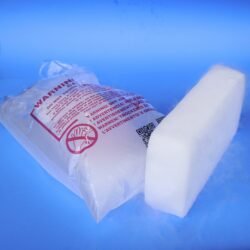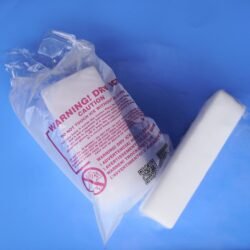What Is the Best Cooler for Dry Ice?
The best cooler for dry ice is a heavy-duty, airtight, hard-sided cooler with thick insulation, pressure-release features, and dry ice compatibility. Leading models include SubZero Dry Ice coolers, YETI Tundra, Pelican Elite, and Engel DeepBlue, all of which are engineered to handle extreme cold, reduce sublimation, and prevent gas buildup. These coolers feature dense insulation, secure gaskets, and durable walls that won’t crack under subzero conditions.
For shipping frozen goods or medical supplies, dry ice shipping boxes with inner foam lining and ventilated outer shells are ideal. If you need stationary storage, a dry ice storage container made from reinforced polymer or polyethylene works best. You can also extend dry ice longevity by lining your cooler or box with a silver mylar bag, which helps block radiant heat and preserve cold temperatures.
Quick picks by use:
- Best overall: SubZero Dry Ice coolers or YETI Tundra (multi-day retention)
- Best for shipping: EPS-lined dry ice shipping boxes
- Best for long-term storage: Vented dry ice storage containers
- Best add-on: Silver mylar bag for added insulation
This guide will walk you through cooler types, performance features, dry ice safety, and common questions like how long 10 lbs of dry ice lasts in a cooler and what packaging is legally required for shipping.
Core Buying Factors for the Best Cooler for Dry Ice
Choosing the best cooler for dry ice means understanding the features that directly affect performance, safety, and dry ice lifespan. Here’s what separates an ordinary cooler from a dry ice powerhouse:
1. Insulation Thickness & Quality
Dry ice sublimates rapidly when exposed to heat—even small air leaks or thin walls can shorten its lifespan. That’s why insulation matters.
- Look for: Coolers with at least 2–3 inches of high-density polyurethane foam, like those found in SubZero Dry Ice coolers, YETI, and Pelican.
- Why it works: Thick insulation traps cold air and slows heat intrusion, reducing how fast the dry ice turns to gas.
- Avoid: Cheap foam coolers or soft-sided models with minimal insulation—they can lose temperature retention in just hours.
2. Airtight Lid & Gasket Seal
Your cooler must be tightly sealed, but not completely airtight, due to gas release from sublimation.
- Gasket: High-quality rubber gaskets (D-shaped or freezer-grade) help prevent warm air from sneaking in.
- Latches: Heavy-duty latches create a strong seal, critical for long storage.
- Vents or valves: Coolers like SubZero’s vented storage containers and some YETI models include a pressure-release valve, allowing CO₂ gas to escape without forcing the lid open.
3. Structural Durability
Dry ice can be brutal—at -109°F, it can crack cheap plastic or compromise cooler walls.
- Material to choose: Roto-molded polyethylene, thick-walled polymer, or reinforced HDPE.
- Why it matters: Containers like the SubZero transport coolers are built specifically to hold both bulk dry ice and heavy frozen cargo—perfect for industrial, food service, or emergency use.
- Bonus tip: Reinforced hinges prevent stress cracks if gas expands inside.
4. Interior Size vs. Dry Ice Volume
Size directly affects performance. If your cooler is too large for your dry ice quantity, excess air will accelerate sublimation.
- Rule of thumb:
- 5–10 lbs of dry ice = 24 hours of cooling in a sealed medium cooler
- Double the dry ice = double the time (if the cooler is well insulated)
- Pro tip: Fill air gaps with cardboard, bubble wrap, or foam inserts to slow air circulation.
5. Dry Ice Compatibility Labeling
Always check the manufacturer’s specs. Not all coolers are officially rated for dry ice use.
- Look for: Explicit mention of dry ice compatibility
- Also note: Some warranty policies don’t cover damage caused by improper use with dry ice, especially in soft-sided or low-end coolers.
Cooler Categories Compared: Which One Is Right for You?
Not every cooler that can “hold ice” is built for dry ice. Below, we compare four major categories—from high-performance outdoor models to specialized dry ice storage containers—so you can choose based on your specific needs.
1. Roto-Molded Coolers (Best Overall for Dry Ice)
If you want maximum retention, reliability, and safety, roto-molded coolers are the gold standard.
What They Are:
Made with a rotational molding process, these coolers feature seamless, ultra-dense construction and thick insulation.
Top Brands:
- SubZero Dry Ice Coolers
- YETI Tundra
- Pelican Elite
- Engel DeepBlue
Pros:
- Keeps dry ice solid for 3–5 days (or more)
- Durable enough for transport, stacking, and heavy loads
- Designed for extreme cold and safe gas venting
Cons:
- Heavier than other coolers
- Premium price
Best Use Cases:
- Extended dry ice use (shipping, storage, events)
- Emergency preparedness or backup freezer
- Camping, hunting, or medical transport
2. Lightweight Hard-Shell Coolers (Budget-Friendly Short-Term Option)
For lighter use or short durations, you might not need a $400 cooler. Hard-shell models from Coleman or Igloo can get the job done—but only if they’re dry ice compatible.
Pros:
- More affordable ($50–$100)
- Lightweight and portable
- Available in local stores
Cons:
- Shorter retention (usually <24 hours)
- Plastic walls may crack over time from cold exposure
- Lids often lack an airtight seal
Best Use Cases:
- Day trips
- Local deliveries
- Dry ice transport under 12 hours
3. Dedicated Dry Ice Storage Containers (Industrial & Scientific Use)
If you’re storing dry ice on-site, in bulk, or for commercial use, a dry ice storage container is your best choice.
Features:
- Industrial-grade polymer construction
- Sealed lids with gas venting channels
- Designed to safely hold 100+ lbs of dry ice
- Some models include CO₂ monitoring integration
Examples:
- SubZero’s Vented Dry Ice Bins
- CryoSafe BioTransport Units
Pros:
- Holds dry ice for days with minimal loss
- Stackable and forklift-compatible
- Built for safety and compliance
Cons:
- Not portable
- Expensive upfront investment
Best Use Cases:
- Medical facilities and labs
- Restaurants or butcheries
- eCommerce frozen fulfillment centers
4. Dry Ice Shipping Boxes (Single-Use Transport)
When you need to ship perishable goods, dry ice shipping boxes are the industry standard.
What They Include:
- EPS foam liner (or polyurethane)
- Outer cardboard shell with dry ice labeling
- Optional inner silver mylar bag for radiant protection
Pros:
- Lightweight and compliant with shipping regulations
- Disposable or recyclable
- Custom sizes available
Cons:
- Not reusable for long-term storage
- Thin liners = faster sublimation
Best Use Cases:
- Overnight or 2-day frozen delivery
- Meal kit or meat subscription boxes
- Shipping medical supplies or frozen samples
Boosting Retention with a Silver Mylar Bag
When it comes to extending the performance of your dry ice setup—whether in a cooler or shipping box—a silver mylar bag is one of the most overlooked tools. Thin, flexible, and ultra-insulating, these reflective liners can dramatically slow down heat transfer and protect contents from radiant energy.
What Is a Silver Mylar Bag?
A silver mylar bag is made from metallized polyester film (typically PET) designed to reflect up to 97% of radiant heat. It acts like a thermal shield, bouncing external warmth away from your dry ice and helping maintain subzero internal temperatures for longer periods.
You’ve probably seen these used in:
- Emergency blankets
- Thermal food packaging
- Pharmaceutical shipments
- Long-term food storage (when sealed)
Why Use a Mylar Bag with Dry Ice?
Dry ice sublimates faster when exposed to radiant heat, even inside an insulated cooler. A silver mylar bag helps reduce this exposure in three key ways:
- Reflective Surface: Reflects thermal energy from the cooler lid, walls, or external environment.
- Barrier Layer: Creates a secondary seal inside the cooler, especially helpful if the lid isn’t airtight.
- Moisture Protection: Shields contents from direct dry ice contact (important for certain foods, glass bottles, or documents).
How to Use a Mylar Bag with a Cooler or Shipping Box
Step-by-step:
- Open the bag fully and line the interior of your cooler or dry ice shipping box.
- Add a cardboard spacer on the bottom (optional) to prevent direct ice-to-product contact.
- Load dry ice carefully, placing it in the center for optimal airflow.
- Wrap your product or payload inside the remaining mylar bag material, then fold it loosely to allow CO₂ gas to vent.
- Close the cooler or box tightly and use any available pressure-release features.
Note: Never seal a mylar bag completely when using dry ice—it needs to breathe to avoid dangerous gas pressure buildup.
Pro Tips:
- Reusable: Silver mylar bags can often be reused if undamaged.
- Pair with EPS foam: Use with an EPS-lined dry ice shipping box for added insulation.
- FDA-Approved: Food-grade mylar is safe for direct contact with packaged food items.
Packing & Handling Tips: Get the Most Out of Your Dry Ice
Even the best cooler for dry ice won’t deliver results if you don’t pack it properly. Whether you’re storing frozen goods for personal use or shipping across the country, the way you load, insulate, and position your dry ice can make a major difference in retention time.
Here’s how to get it right:
1. Layer Strategically
Dry ice is most effective when used in layers:
- Bottom layer: Cardboard, bubble wrap, or foam to protect against direct contact
- Middle layer: Dry ice
- Top layer: The goods you’re preserving
For even better results:
- Sandwich items between two layers of dry ice
- Avoid placing items directly on bare dry ice—it can freeze-burn or crack fragile items
2. Vent for Safety
Dry ice sublimates into carbon dioxide gas. If trapped in a sealed space, pressure builds quickly—and that can lead to dangerous situations.
- Never use an airtight container without venting
- Use coolers with pressure-release valves
- If using a shipping box, leave a small gap in the outer seal or label the package with “Dry Ice – UN1845”
3. Don’t Overload with Air
Air is the enemy of cold retention. If your cooler or shipping box is half empty, your dry ice will disappear much faster.
Fix it by:
- Adding packing material to reduce airspace (newspaper, bubble wrap, towels)
- Using the smallest container possible for your intended load
4. Avoid Frequent Opening
Every time you open the cooler, you’re letting warm air in—and your dry ice out.
- Plan ahead and only open when needed
- Use compartmentalization: smaller bags or containers within the cooler to grab only what’s needed
5. Wear Protective Gloves
Never handle dry ice with bare hands.
- Use thick insulated gloves or tongs
- Contact with skin can cause severe frostbite within seconds
6. Label Everything Clearly (If Shipping)
For shipments, always follow proper labeling protocols:
- Use “Dry Ice” and “UN 1845” on the box
- Include net weight of the dry ice
- Specify that the package contains “non-hazardous perishable goods” if appropriate
Shipping carriers like FedEx and UPS have strict policies—following them ensures safety and compliance.
Frequently Asked Questions About Dry Ice and Coolers
These are the most common questions asked by people trying to choose the best cooler for dry ice, ship perishables, or plan ahead for temperature-sensitive storage. Each answer is written in a concise, AI Overview–friendly format using target keywords naturally.
How long does dry ice last in a cooler?
Dry ice lasts 18 to 36 hours in a high-quality cooler, depending on insulation, ambient temperature, and the amount of dry ice used. In a well-sealed roto-molded cooler, it can last up to 48 hours. For longer duration, pair with a silver mylar bag and reduce air gaps inside the cooler.
How long will dry ice last in a shipping box?
In a standard dry ice shipping box, dry ice can last 12 to 24 hours. EPS foam liners and added insulation like a silver mylar bag can extend retention to 36 hours. Use a tight-fitting lid and pack items efficiently to reduce air pockets.
How long will 10 lbs of dry ice last?
On average, 10 lbs of dry ice lasts around 24 hours in a properly sealed cooler or storage container. In warmer environments or poorly insulated boxes, it may sublimate within 12–18 hours.
What is the best packaging for dry ice?
The best packaging includes:
- A vented hard-sided cooler or dry ice storage container
- An EPS foam-lined shipping box
- A silver mylar bag for radiant protection
This combination retains cold, manages gas pressure, and keeps items safe during transit or storage.
What is a requirement when shipping dry ice?
Dry ice is classified as a hazardous material (UN 1845). Requirements include:
- Clear labeling of the package
- Indicating net weight of dry ice
- Using a vented container
- Following specific shipper regulations (FedEx, UPS, USPS)
What is the best cooler to use with dry ice?
The best cooler for dry ice is a roto-molded, dry ice–compatible model such as:
- SubZero Dry Ice Coolers
- YETI Tundra
- Pelican Elite
These offer thick insulation, reinforced walls, and safe venting—all critical for handling dry ice efficiently and safely.
Conclusion: Finding Your Best Cooler for Dry Ice
Choosing the best cooler for dry ice isn’t just about brand—it’s about matching your use case with the right combination of materials, insulation, and accessories. If you’re looking for long-term storage, transport, or shipping frozen goods, here’s the bottom line:
- For multi-day cooling: Go with a SubZero Dry Ice Cooler or YETI
- For shipping: Use dry ice shipping boxes lined with EPS foam and a silver mylar bag
- For industrial or lab use: Invest in a dedicated dry ice storage container
No matter your use case, always pack carefully, allow venting, and avoid direct contact with contents. When used correctly, dry ice can outperform traditional ice by hours—if not days.
So whether you’re managing a food delivery business, preserving lab samples, or prepping for a power outage, this guide gives you the clarity to choose confidently—and keep things cool.





